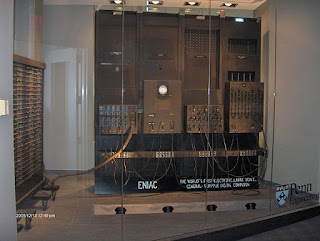Top 5 Universities in (USA)
1Harvard University … [1st in U.S.]
Harvard University is the standard by which all other research universities are measured. No school has ever challenged its position as the world’s premier academic institution in the history of the Shanghai rankings.
Founded in 1636 (only 16 years after the Mayflower touched down at Plymouth Rock), Harvard is the oldest school in the world’s richest nation, and it has capitalized on the benefits this grants. Under manager Jack Meyer’s leadership, the school’s endowment fund grew from $4.6 billion to $25.8 billion in 15 years. Today, the university possesses over $36 billion, and its fortune is still growing.
But there is much more to Harvard than massive wealth. The school has produced 47 Nobel Laureates, 32 heads of state, and 48 Pulitzer Prize winners. It boasts the largest academic library in the world (Widener Library, home to some 6 million volumes), as well as leading medical, law, and business schools. It has an integrated alumni network that stretches around the globe.
It would be invidious to single out any of Harvard’s many academic departments for its excellence, for the school’s principal claim on the #1 position lies in the fact that it is at or very near the top in nearly every field across the entire spectrum of the sciences and the humanities!
Not only is Harvard dominant across a multitude of academic fields, it is also ideally situated to work alongside a variety of other schools. The most obvious example is MIT, but the greater Boston metropolitan area is also home to Boston College, Boston University, Northeastern, Tufts, Brandeis, and several other research universities. This fact equips both students and faculty with endless opportunities for collaborative research.
2Stanford University … [2nd in U.S.]
With an $18.7 billion endowment Stanford has access to numerous world-class research resources.
The school’s 1,189 acre Jasper Ridge Biological Preserve lets scientists study ecosystems first hand. Its 150-foot radio telescope, nicknamed “The Dish,” studies the ionosphere.
Stanford also boasts a 315-acre habitat reserve which is actively trying to bring back the endangered California tiger salamander. And the SLAC Accelerator Laboratory actively advances the U.S. Department of Energy’s research.
Stanford is also affiliated with the prestigious Hoover Institution, which is one of the nation’s leading social, political, and economic think tanks.
But it takes more than just great laboratories and facilities to build a great research center. Stanford also has some of the finest minds in the world working for it. The school’s faculty currently include 22 Nobel Laureates, 51 members of the American Philosophical Society, three Presidential Medal of Freedom recipients, 158 National Academy of Science members, five Pulitzer Prize winners, and 27 MacArthur Fellows.
3Massachusetts Institute of Technology (MIT) … [3rd in U.S.]
In the century and a half since its founding in 1861, MIT has become the world’s preeminent science research center.
The university is known for a focused approach that uses first-class methodologies to tackle world-class problems. This pragmatic creativity has produced legions of scientists and engineers, as well as 80 Nobel Laureates, 56 National Medal of Science winners, 43 MacArthur Fellows, and 28 National Medal of Technology and Innovation winners.
Nevertheless, the school’s more than $10 billion endowment still leaves plenty of room for the arts and humanities. This is why MIT Press can publish 30 prestigious journals and 220 state-of-the-art books every year. Since 1899, MIT Technology Review has continuously researched developing trends in the industrial sciences and other related fields, making their publications essential for anyone trying to understand where future innovation is headed.
Notable people affiliated with MIT include Apollo 11 astronaut Buzz Aldrin, father of linguistics Noam Chomsky, former U.N. Secretary General Kofi Annan, and former Federal Reserve Chairman Ben Bernanke.
4University of California at Berkeley … [4th in U.S.]
 Berkeley is unique among the elite universities of the world. Most of the schools it competes with are privately owned, but Berkeley is a state school—albeit one with the elite status of a private school.
Berkeley is unique among the elite universities of the world. Most of the schools it competes with are privately owned, but Berkeley is a state school—albeit one with the elite status of a private school.
The university is nestled in a pleasant city by the same name, within easy commuting distance of San Francisco. With over 36,000 students, Berkeley is also one of the larger elite universities.
An impressive selection of talented students feeds its over 350 degree programs, producing more Ph.D.’s annually than any other U.S. institution. Student research is encouraged as each year 52 percent of seniors assist their professors in their research.
Berkeley draws students from over 100 nations. During the previous decade the National Science Foundation granted its students more graduate research fellowships than any other school.
The faculty has produced 39 members of the American Philosophical Society, 77 Fulbright Scholars, 32 MacArthur Fellows, and 22 Nobel Laureates (eight of whom are current faculty members).
5University of Cambridge
 As one of the oldest universities in the world (founded in 1209), Cambridge is an ancient school steeped in tradition.
As one of the oldest universities in the world (founded in 1209), Cambridge is an ancient school steeped in tradition.
It is small exaggeration to say the history of western science is built on a cornerstone called Cambridge. The roster of great scientists and mathematicians associated with the university includes Francis Bacon, Isaac Newton, Charles Darwin, James Clerk Maxwell, Augustus De Morgan, Ernest Rutherford, G.H. Hardy, Srinivasa Ramanujan, Alan Turing, Francis Crick, James Watson, Roger Penrose, and Stephen Hawking. Whether speaking of the unifying ideas in physics, the foundations of computer science, or the codifying of biology, Cambridge has been at the forefront of humanity’s quest for truth longer than most nations have existed.
Of course, great achievements are not restricted to the sciences. Such luminaries in the humanities as Desiderius Erasmus, John Milton, G.E. Moore, Bertrand Russell, Ludwig Wittgenstein, John Maynard Keynes, and C.S. Lewis, among dozens of other great names, taught and studied here.
But despite the many memories conjured by its imposing Gothic architecture, Cambridge does not live in the past. The university remains one of the world’s elite research institutions, with only Oxford to rival it in the U.K. and only a handful of American schools able to do so from overseas.
Its over 18,000 students represent more than 135 countries and its faculty have earned over 80 Nobel laureates.
In the century and a half since its founding in 1861, MIT has become the world’s preeminent science research center.
The university is known for a focused approach that uses first-class methodologies to tackle world-class problems. This pragmatic creativity has produced legions of scientists and engineers, as well as 80 Nobel Laureates, 56 National Medal of Science winners, 43 MacArthur Fellows, and 28 National Medal of Technology and Innovation winners.
Nevertheless, the school’s more than $10 billion endowment still leaves plenty of room for the arts and humanities. This is why MIT Press can publish 30 prestigious journals and 220 state-of-the-art books every year. Since 1899, MIT Technology Review has continuously researched developing trends in the industrial sciences and other related fields, making their publications essential for anyone trying to understand where future innovation is headed.
Notable people affiliated with MIT include Apollo 11 astronaut Buzz Aldrin, father of linguistics Noam Chomsky, former U.N. Secretary General Kofi Annan, and former Federal Reserve Chairman Ben Bernanke.
4University of California at Berkeley … [4th in U.S.]
 Berkeley is unique among the elite universities of the world. Most of the schools it competes with are privately owned, but Berkeley is a state school—albeit one with the elite status of a private school.
Berkeley is unique among the elite universities of the world. Most of the schools it competes with are privately owned, but Berkeley is a state school—albeit one with the elite status of a private school.The university is nestled in a pleasant city by the same name, within easy commuting distance of San Francisco. With over 36,000 students, Berkeley is also one of the larger elite universities.
An impressive selection of talented students feeds its over 350 degree programs, producing more Ph.D.’s annually than any other U.S. institution. Student research is encouraged as each year 52 percent of seniors assist their professors in their research.
Berkeley draws students from over 100 nations. During the previous decade the National Science Foundation granted its students more graduate research fellowships than any other school.
The faculty has produced 39 members of the American Philosophical Society, 77 Fulbright Scholars, 32 MacArthur Fellows, and 22 Nobel Laureates (eight of whom are current faculty members).
5University of Cambridge
 As one of the oldest universities in the world (founded in 1209), Cambridge is an ancient school steeped in tradition.
As one of the oldest universities in the world (founded in 1209), Cambridge is an ancient school steeped in tradition.It is small exaggeration to say the history of western science is built on a cornerstone called Cambridge. The roster of great scientists and mathematicians associated with the university includes Francis Bacon, Isaac Newton, Charles Darwin, James Clerk Maxwell, Augustus De Morgan, Ernest Rutherford, G.H. Hardy, Srinivasa Ramanujan, Alan Turing, Francis Crick, James Watson, Roger Penrose, and Stephen Hawking. Whether speaking of the unifying ideas in physics, the foundations of computer science, or the codifying of biology, Cambridge has been at the forefront of humanity’s quest for truth longer than most nations have existed.
Of course, great achievements are not restricted to the sciences. Such luminaries in the humanities as Desiderius Erasmus, John Milton, G.E. Moore, Bertrand Russell, Ludwig Wittgenstein, John Maynard Keynes, and C.S. Lewis, among dozens of other great names, taught and studied here.
But despite the many memories conjured by its imposing Gothic architecture, Cambridge does not live in the past. The university remains one of the world’s elite research institutions, with only Oxford to rival it in the U.K. and only a handful of American schools able to do so from overseas.
Its over 18,000 students represent more than 135 countries and its faculty have earned over 80 Nobel laureates.





Comments
Post a Comment